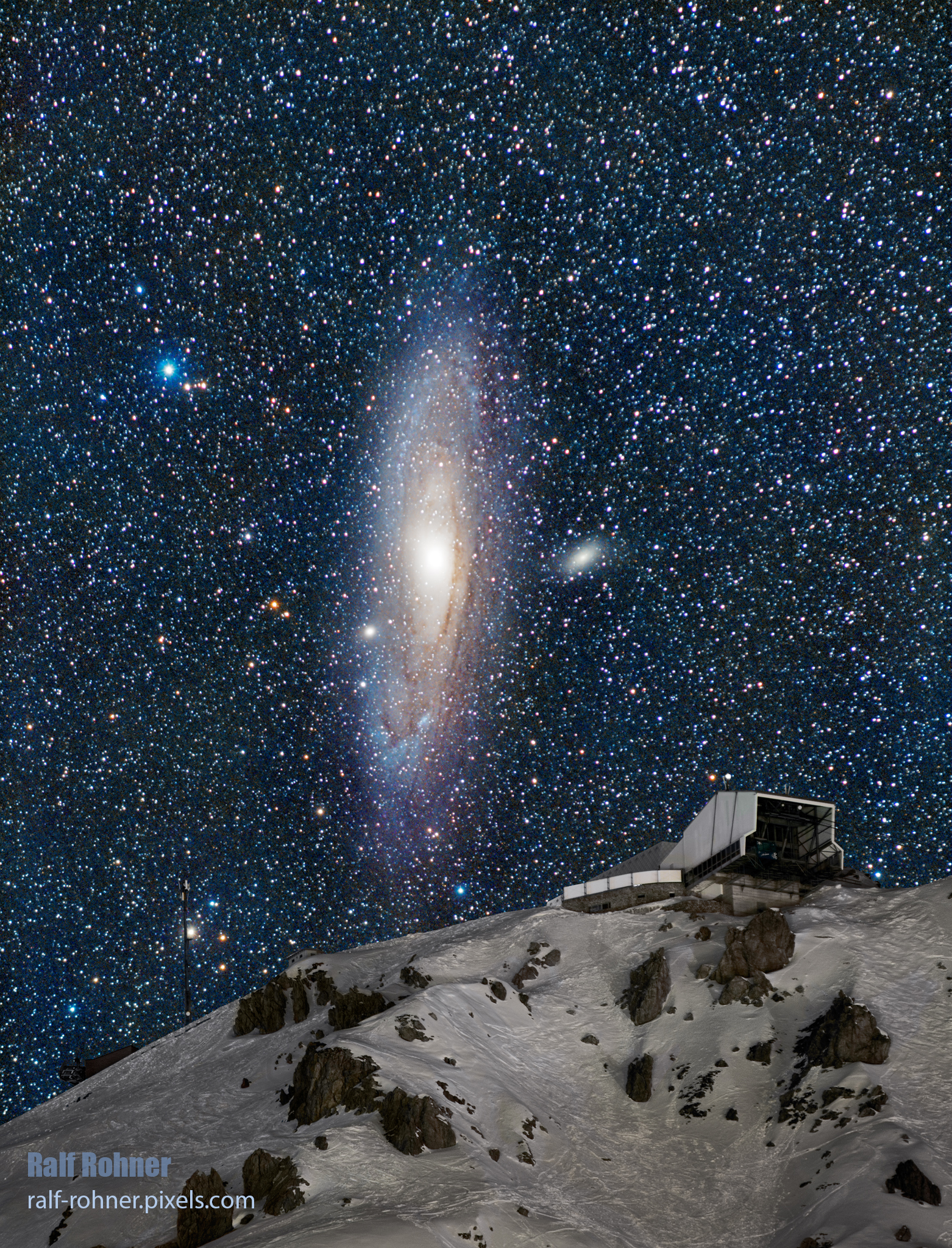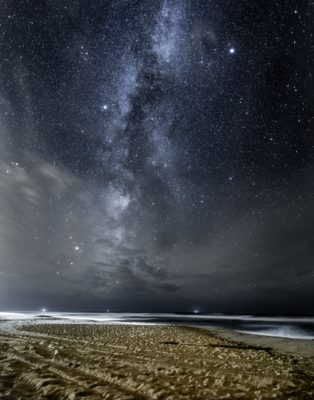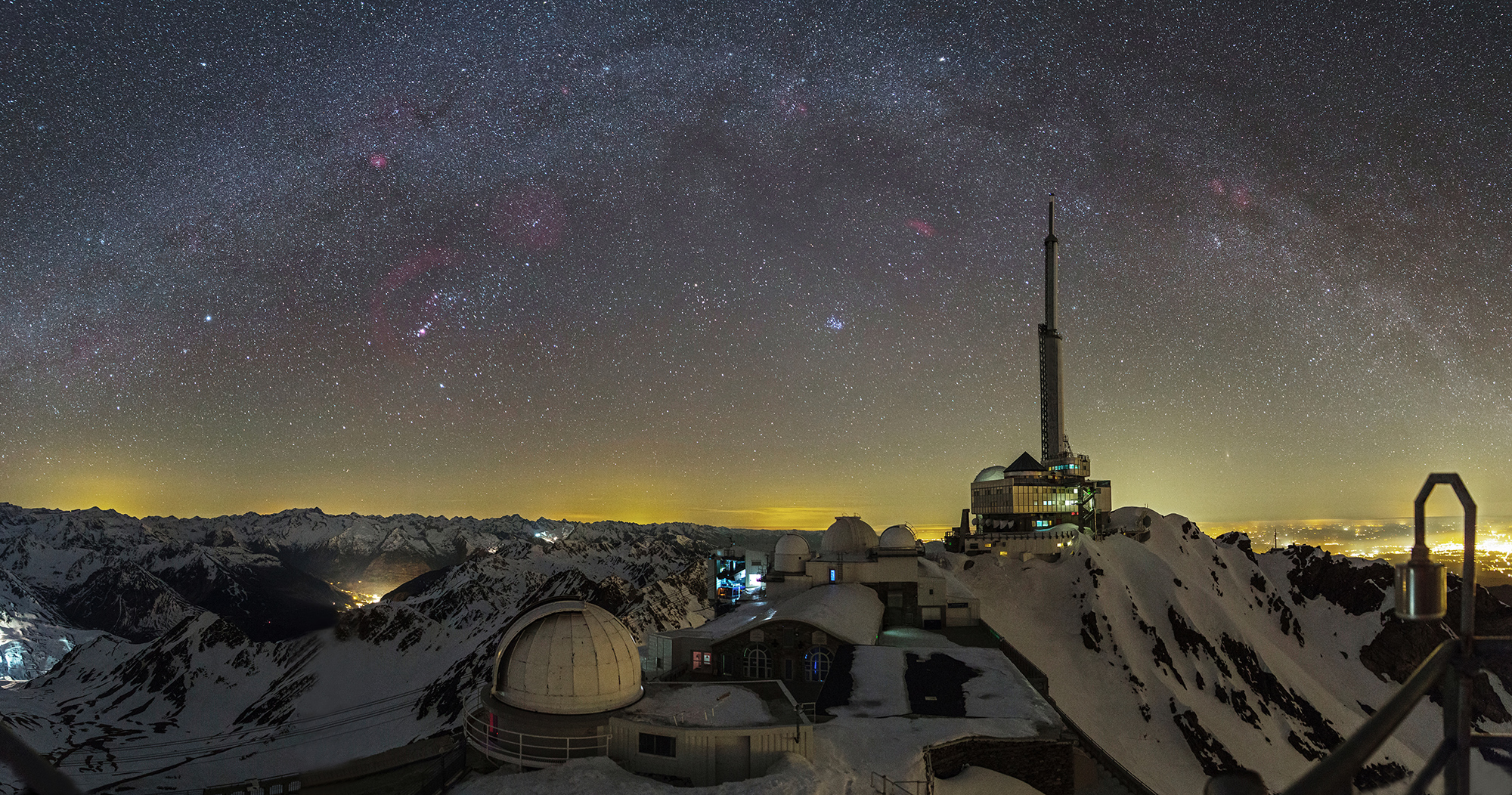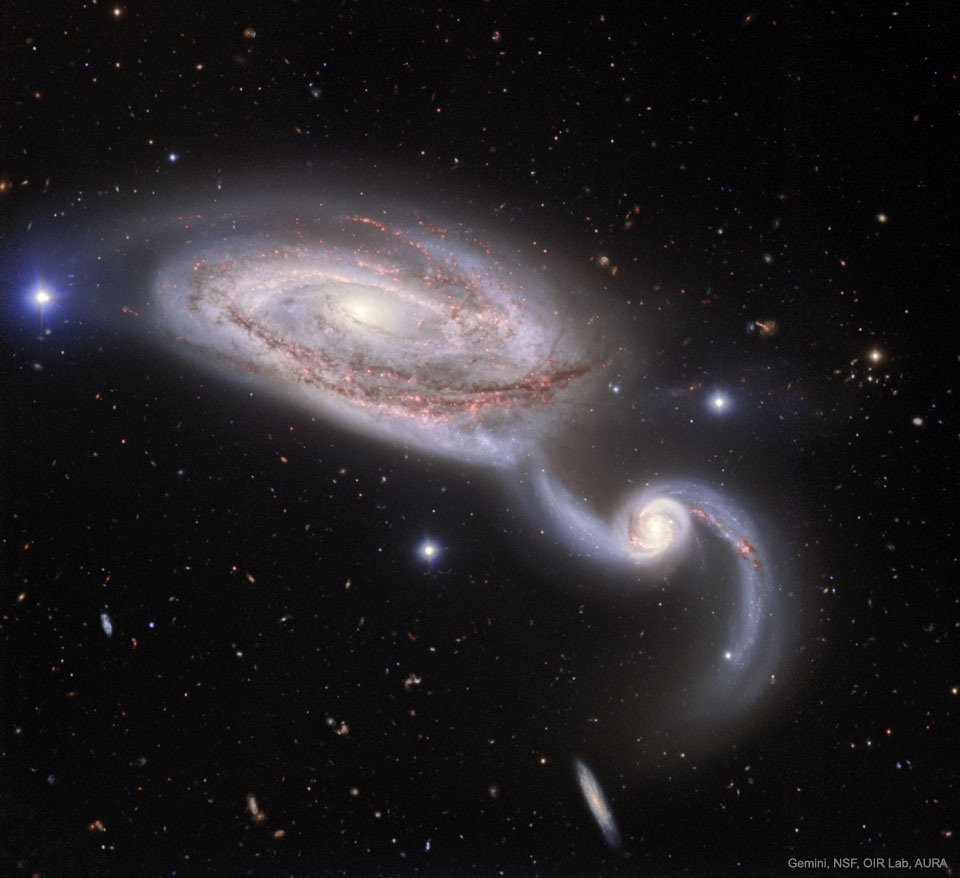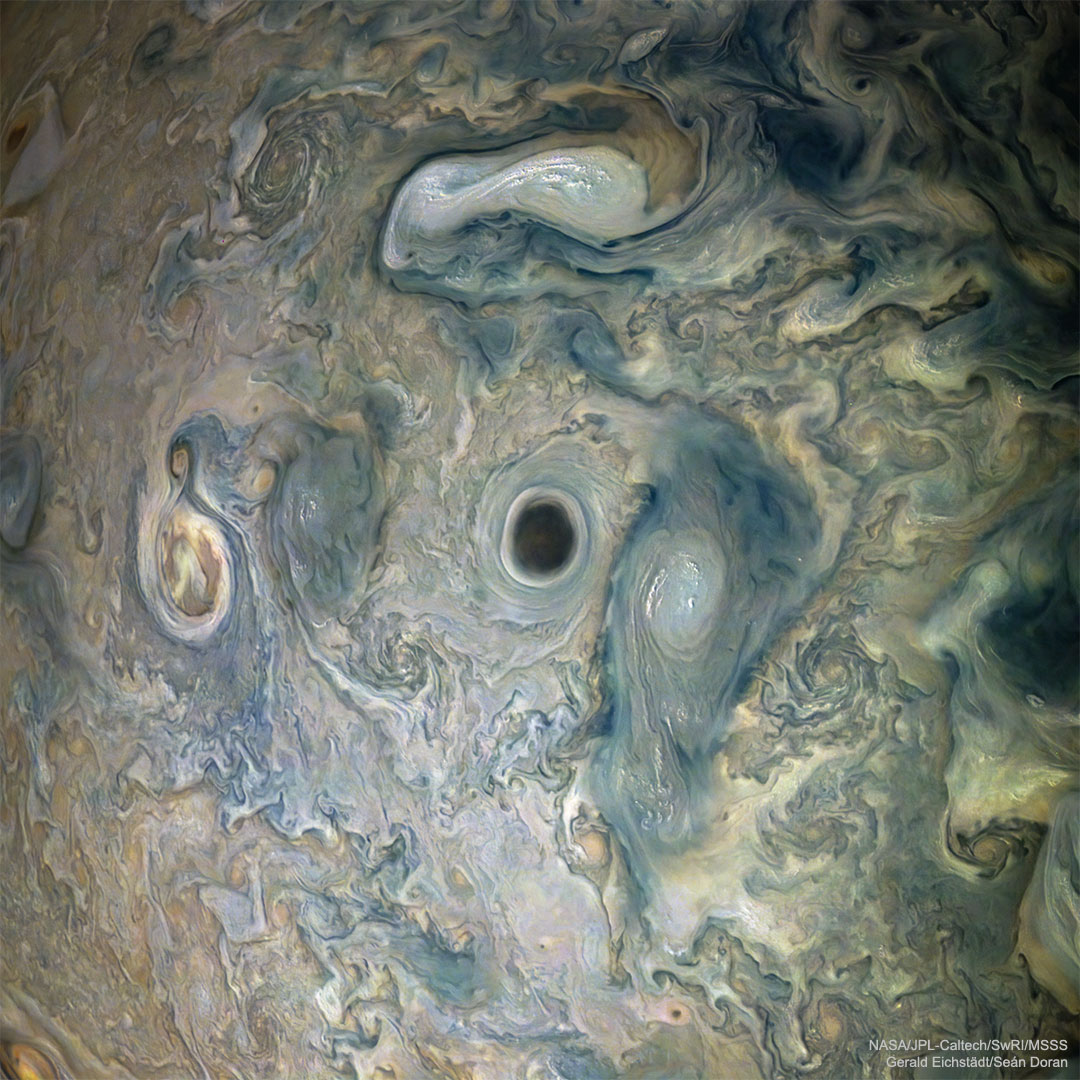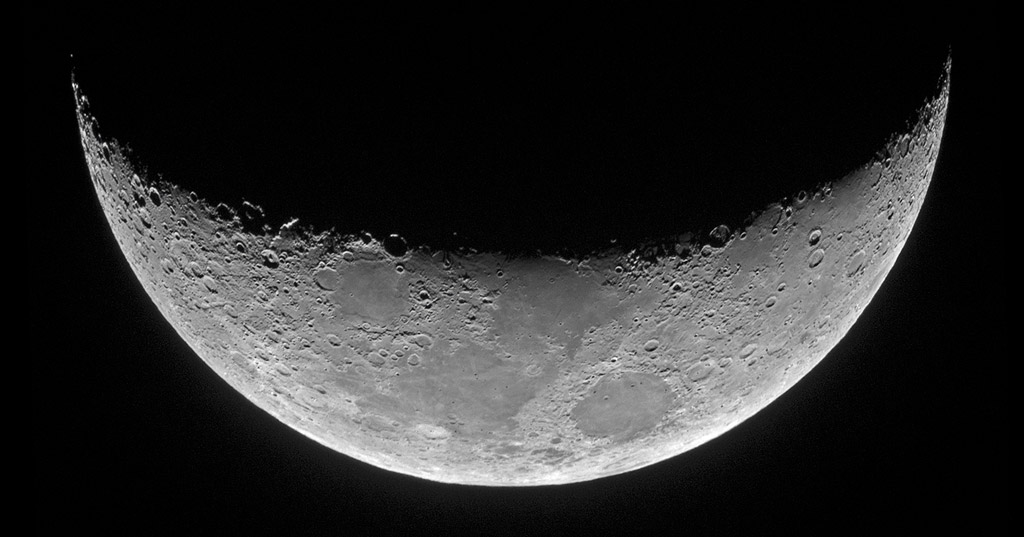
Située en moyenne à 384 400 kilomètres, la Lune est le seul satellite naturel de notre planète Terre. Avec ses 3 470 kilomètres de diamètre et parce qu’elle est très proche de nous comparés aux autres astres du ciel, la Lune offre de nombreuses choses à voir au curieux : forme changeante, détails de surface, rapprochements esthétiques avec d’autres astres… mais aussi quelques surprises qui font travailler l’imaginaire !
Croissant, quartier, pleine lune…
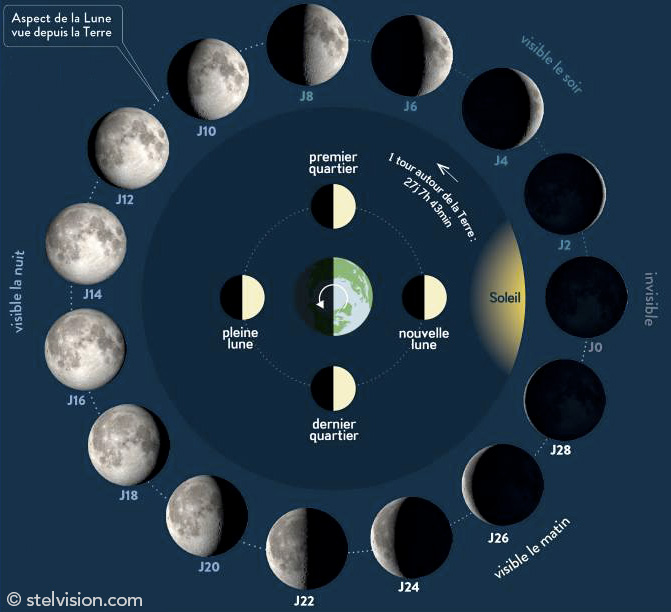 Si on voit aussi bien la Lune, il faut remercier le Soleil : c’est en effet lui qui l’éclaire et qui la rend visible à nos yeux. Vous aurez sans doute remarqué qu’au fil du temps, la Lune change de forme : parfois en fin croissant, puis en quartier, voire davantage, entièrement ronde ou même invisible ! Pourquoi ces changements ? Tout simplement parce que notre satellite tourne autour de la Terre en 28 jours environ et que depuis le point où nous l’observons, la partie éclairée par le Soleil n’est pas toujours la même.
Si on voit aussi bien la Lune, il faut remercier le Soleil : c’est en effet lui qui l’éclaire et qui la rend visible à nos yeux. Vous aurez sans doute remarqué qu’au fil du temps, la Lune change de forme : parfois en fin croissant, puis en quartier, voire davantage, entièrement ronde ou même invisible ! Pourquoi ces changements ? Tout simplement parce que notre satellite tourne autour de la Terre en 28 jours environ et que depuis le point où nous l’observons, la partie éclairée par le Soleil n’est pas toujours la même.sTELVISION



